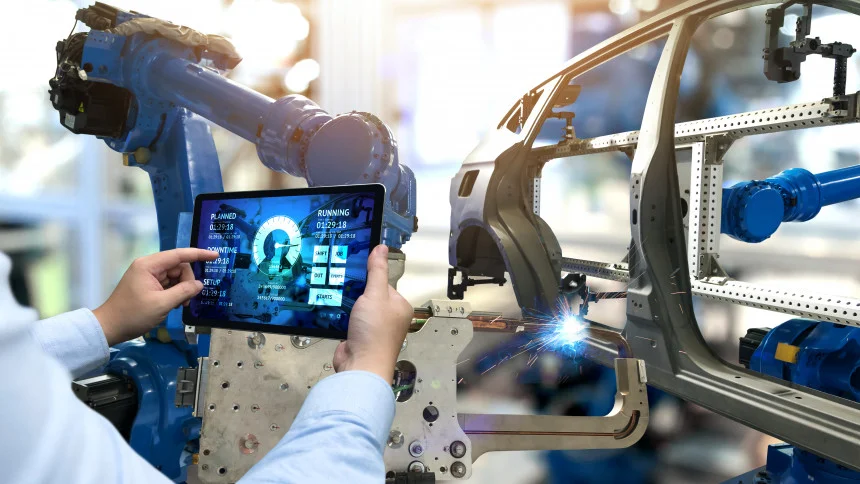Automotive quality control is an essential part of the vehicle production process, acting as a crucial safety net for drivers and passengers alike. This aspect of manufacturing ensures that each car leaving the factory meets stringent safety and performance standards. Without these rigorous checks, vehicles on the road would pose significant risks. In this blog post, we will explore how automotive quality control contributes to the overall safety and reliability of modern vehicles, ensuring that every car performs at its best.
Understanding Automotive Quality Control
Automotive quality control involves a series of checks and procedures designed to ensure that every car meets high standards for quality and safety. This process starts with inspecting raw materials and continues through each stage of production, right up to the final assembly. The goal is to catch and fix any issues that could affect the vehicle’s performance or safety.
Imagine a detailed system where each component, from the smallest bolt to the entire engine, is scrutinized to ensure it works perfectly. Manufacturers use various tests and inspections to find defects, whether they are in the car’s structure, electronics, or mechanical systems. This attention to detail ensures that when you drive off the lot, your vehicle is in top-notch condition.
Automotive quality control not only prevents defects but also enhances the overall reliability of vehicles, giving consumers peace of mind that their car will perform well for years to come.
The Role of Quality Control in Safety
Quality control is the backbone of safety in the automotive industry. Through detailed inspections, manufacturers can pinpoint and resolve safety issues before cars hit the road. This includes checking vital components like brakes, airbags, and electronic systems to ensure they work correctly under various conditions. For example, brakes must perform well even in extreme situations to avoid accidents. Airbags need to deploy precisely when needed to protect passengers. Electronic systems are tested to prevent failures that could lead to unsafe driving conditions. By rigorously testing these critical parts, quality control helps to make sure every car is as safe as possible. This meticulous attention to detail not only protects drivers and passengers but also helps to build trust in the brand. When consumers know that a vehicle has undergone extensive safety checks, they can drive with greater peace of mind, confident in their car’s ability to keep them safe.
Performance and Reliability Checks
Performance and reliability checks are vital in automotive quality control to ensure that vehicles perform efficiently and dependably. These checks involve testing the engine, transmission, and suspension systems to catch any potential issues early on. By doing so, manufacturers can address problems before they affect the vehicle’s performance. For instance, the engine is tested for power output, fuel efficiency, and emissions to ensure it meets stringent standards. The transmission is evaluated for smooth shifting and durability, while the suspension is checked for ride comfort and handling. These thorough assessments help ensure that each car delivers a reliable driving experience. When a vehicle undergoes these rigorous performance checks, it not only meets the high standards set by the manufacturer but also provides the driver with confidence that their car will function optimally throughout its lifespan.
Advanced Technologies in Quality Control
In today’s world, advanced technologies have revolutionized automotive quality control. State-of-the-art tools like laser scanners and 3D imaging provide incredibly detailed inspections of vehicle parts. Imagine a laser scanning every inch of a car component to spot even the tiniest flaws. Additionally, computer simulations allow manufacturers to test how parts will perform under various conditions, without ever having to build a prototype. Automation also plays a key role, making quality control processes faster and more accurate. Robots can now conduct repetitive inspections with high precision, ensuring that no defects slip through the cracks. These technologies are making vehicles safer and more reliable, taking quality control to the next level.
Case Studies of Quality Control Successes
Effective quality control has led to remarkable achievements in the automotive industry. For example, Toyota’s commitment to rigorous testing and continuous improvement has earned them a stellar reputation for reliability. They use a meticulous approach called “kaizen,” meaning continuous improvement, which ensures every car meets high standards for safety and performance. Another standout is Tesla, which uses advanced robotics and artificial intelligence to inspect their vehicles. These technologies allow Tesla to quickly spot and fix issues, leading to top-notch quality. Their innovative methods have set new benchmarks in the industry. Similarly, Ford has implemented a robust quality control system to test the durability of their trucks under extreme conditions, ensuring they can withstand tough environments. These case studies illustrate how dedicated quality control processes contribute to producing safe, reliable, and high-performing vehicles.
The Future of Automotive Quality Control
The future of automotive quality control is exciting and filled with innovative possibilities. As cars get smarter and more advanced, quality control methods are also evolving to keep up. One of the most promising developments is the use of machine learning and artificial intelligence. These technologies can analyze huge amounts of data to detect patterns and predict potential issues before they become problems. Imagine a system that can learn from every vehicle it inspects, becoming more accurate over time.
Another key trend is the integration of the Internet of Things (IoT). With IoT, car parts can communicate with each other and with centralized systems in real time. This means that any irregularities can be identified and addressed almost instantly. For instance, sensors in the engine could alert the manufacturer to a potential issue, allowing for immediate corrective action.
3D printing is also making waves in automotive quality control. This technology enables the quick production of precise prototypes and components, making it easier to test and refine parts before they are mass-produced. It’s like having a mini factory that can create and test parts on demand.
Collaboration is another vital aspect of the future. Manufacturers are increasingly working closely with suppliers to ensure quality at every stage of production. By sharing data and insights, they can maintain high standards more consistently.
As the automotive industry continues to innovate, quality control will adapt and improve, ensuring that the cars of the future are safer and more reliable than ever before. The journey ahead is thrilling, and these advancements will play a crucial role in shaping the vehicles we drive.




